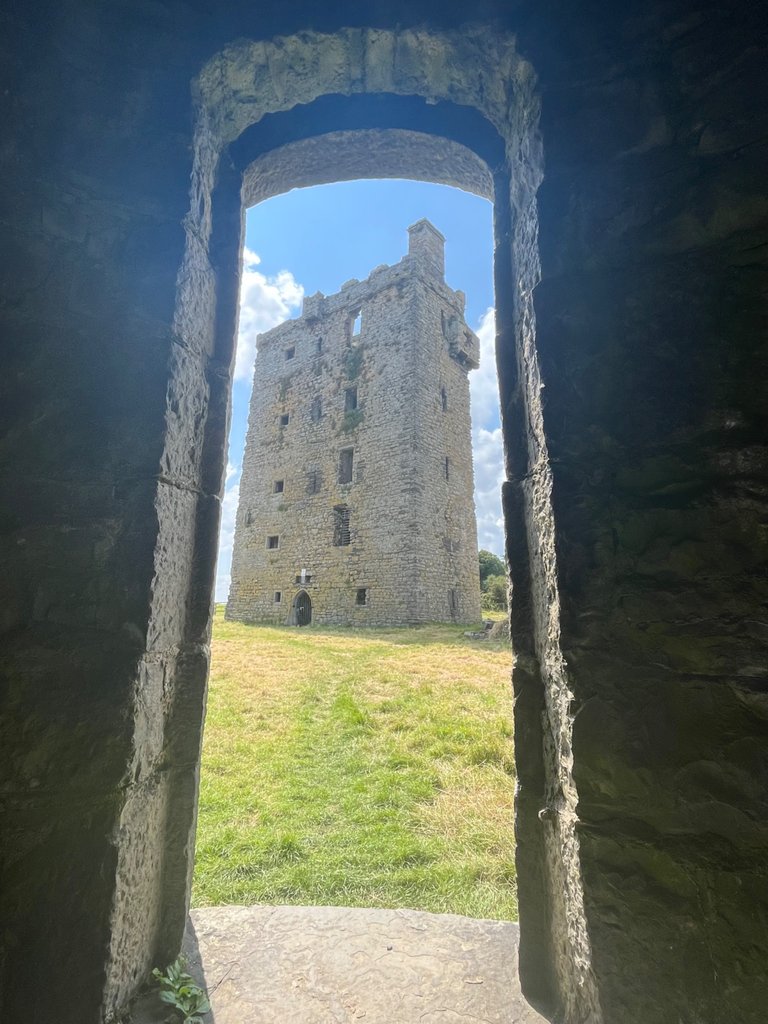
Carrigaholt Castle, constructed in the late 15th century, is a remarkable example of a tower house, a favored style among the Irish gentry during that time. The tower house, a section of a larger complex, showcases a steep base batter and is made of local rough-course flagstone with limestone windows and doors. In the 19th century, a folly was built overlooking the pier. On the western side of the castle, corbels supported a wall for an attached building.
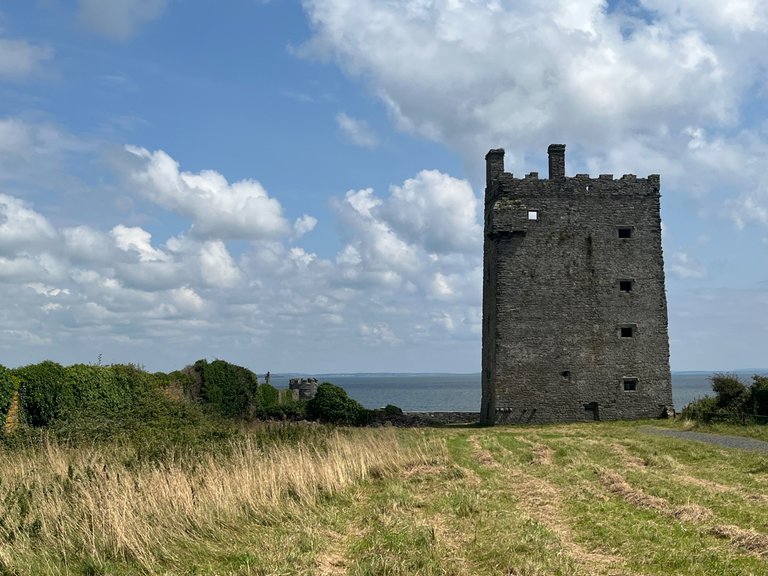
Inside the castle, to the south of the entrance hall, there is a vaulted chamber with a wide circular stairwell and a narrow chamber to the east, illuminated by a small loop. The spiral stairs were crafted using local flagstone. The tower house contains two vaults, one above the ground floor and another above the third floor, with the remaining floors supported by beams resting on corbels. A lone original beam remains in place above the second floor. Double light windows provide light on the upper floors, although the central mullions are missing, and the walls over each window are supported by now decaying wooden lintels, likely added in the 18th century to modernize the tower. The castle showcases extensive refurbishment in brick.
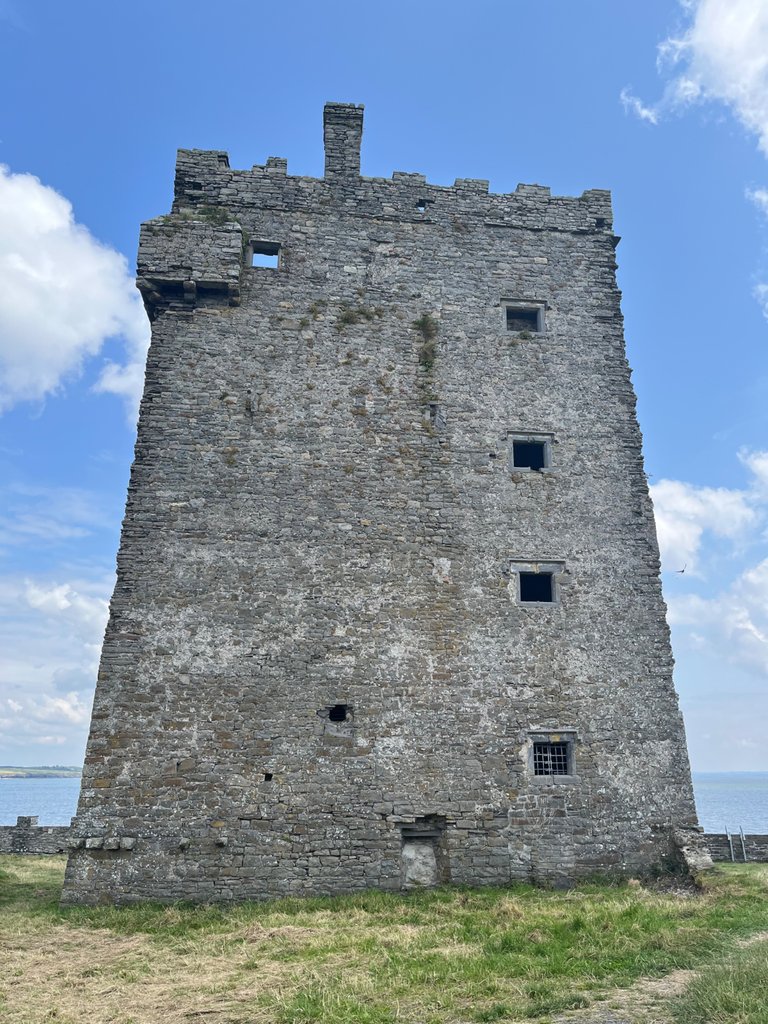
The fourth floor, recently restored, features a splendid limestone fireplace with the initials "D.B. 1603" (Daniel O'Brien) carved on it. Adjacent to this room, on the castle wall, is a corner machicoulis, or bartizan, defending the north and west walls. A sketch from 1675 depicted a grand mansion connected to the western side of the tower. Local tradition tells of Lord Clare training his dragoons on the lawn in front of the castle, which has long since been eroded by the waters of the Shannon. It is said that the ghosts of Lord Clare and his Dragoons roam the west on stormy winter nights, vanishing at dawn into the surges off Carrigaholt.
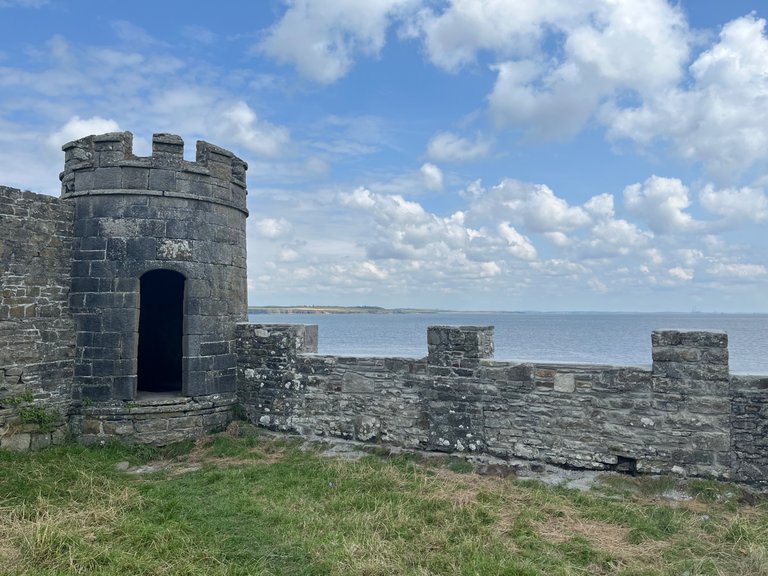
In the northeast corner, there is a round turret, likely from the 18th or 19th century. This cut stone turret stands one story high, adorned with crenellations, and features a cracked flagstone ceiling. It contains four narrow loops using earlier 15th-century jambs. The entrance to the castle bawn is flanked by two limestone pillars, covered with a layer of red brick likely added in the mid-17th century. Some of the brick on the northerly pillar has worn away, revealing the original neat limestone beneath.
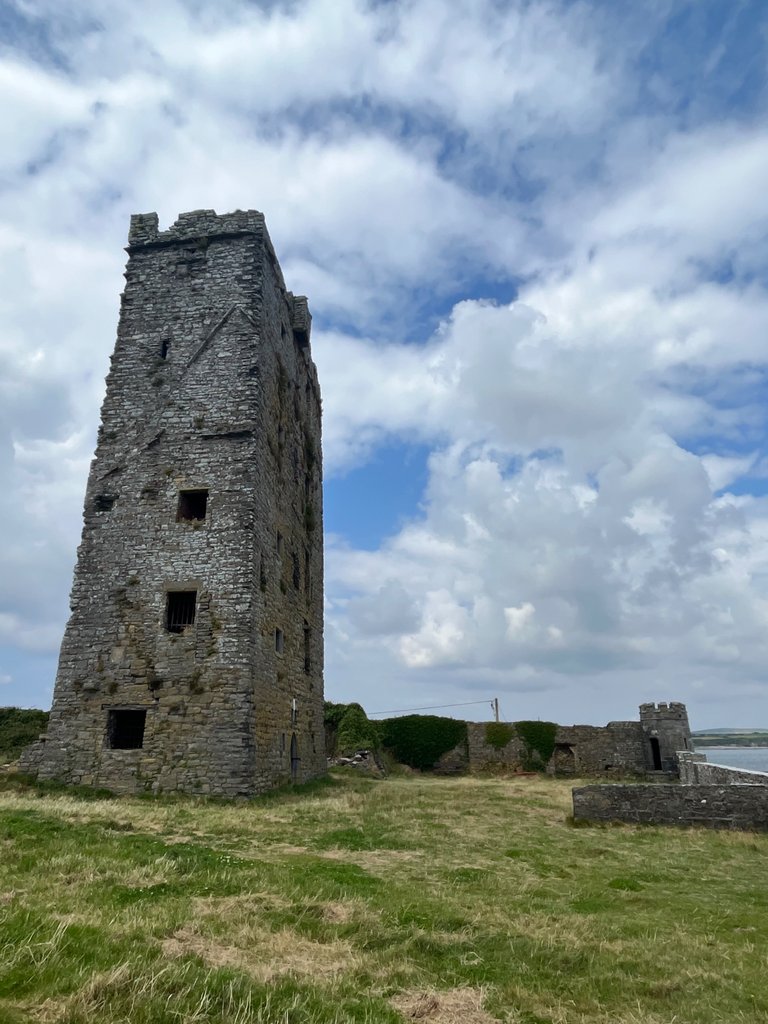
[//]:# (!pinmapple 52.60478 lat -9.70974 long d3scr)
